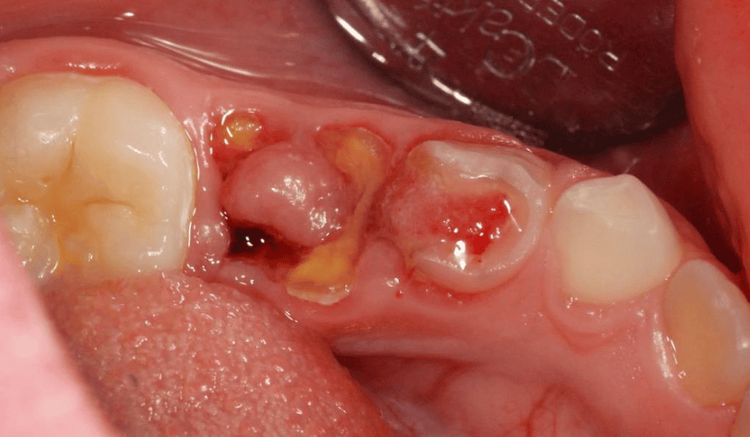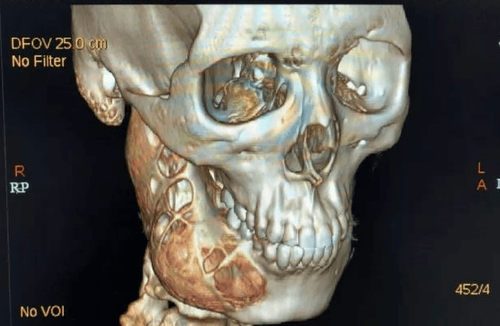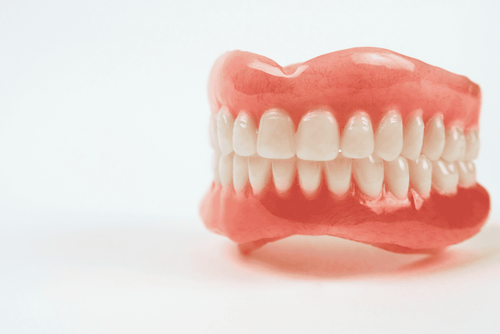This is an automatically translated article.
The article was professionally consulted by Specialist Doctor I Nguyen Trung Hau - Doctor of Odonto-Stomatology - Department of Medical Examination & Internal Medicine - Vinmec Da Nang International General Hospital.Ameloblastoma is a benign tumor that occurs in the jawbone, causing swelling in the cheeks and facial deformity. If detected late, enamel tumor can spread to surrounding tissues, easily become malignant tumor, metastasize to blood, lymphatic system and lead to death.
1. Enamel Tumor - What is Ameloblastoma?
Ameloblastoma (full name is Ameloblastoma) is a rare, benign tumor, appearing most commonly in the maxillofacial region. Enamel tumors are caused by the cells that form the protective enamel lining on the teeth, which have the same organization as enamel, but differentiate in an abnormal direction and do not form enamel.Enamel tumors are more common in men. The disease is diagnosed at any age, but is more common in adults between the ages of 40 and 60. Enamel tumors are constantly growing, invading silently. After a period of time, enamel tumors can appear malignant, invade the jawbone area, make the cheeks swollen and painful, and cause severe facial disfigurement if the tumor is large. Very rarely, ameloblastoma cells metastasize to other areas of the body, such as the lymph nodes in the neck and lungs.
Because enamel neoplasms often have a high recurrence rate, treatment tends to be thorough, especially in cases where enamel tumors recur after being treated conservatively. Definitive treatment with large yeast tumors often leaves many severe sequelae for patients in terms of aesthetics and function, especially in young patients, affecting quality of life after treatment. by surgery. Therefore, early diagnosis of tooth enamel tumors is essential.

Hình ảnh u men răng - Ameloblastoma
2. Symptoms of tooth enamel
2.1. Peripheral enamel tumors Due to the abnormality in the differentiation of the tooth-forming epithelium, the enamel-forming cells are misplaced in the gums or alveolar bone. Peripheral melanoma is a tumor with a smooth surface, consisting of one or more lobes.2.2. Central enamel tumor For the maxillary bone, the symptoms appear depending on the growth, size and invasive ability of the enamel tumor, including: Swollen mass in the middle of the face, painful swollen cheeks, swollen gums, palate, stuffy nose, loss of smell. Patients often experience numbness of the upper lip, cheek, and side of the nose on the same side as the V2 nerve is affected.
For mandibular bone, enamel tumor symptoms depend on the stage of the disease:
Early stage In the early stages, the tumor grows slowly, silently, almost without showing any signs. The disease is often discovered incidentally on routine radiographs.
However, relying on X-ray film alone is not enough to conclude the diagnosis, but must combine results from pathology.
Stage of development enamel Tumor can develop in all directions, causing destruction of bone and surrounding tissues, loss of tooth roots, numbness of lips and chin,... When the tumor has grown after a period of time. Over time, it begins to be large, causing swelling of the bones, patients often have facial deformities, loss of aesthetics.
Looking inside the mouth can see swollen gums, but usually does not cause pain. The surface of the tumor is smooth, the teeth on the tumor may be loose or slightly displaced. In some cases, patients experience pain, discomfort and discharge of pus.
Severe stage In the late stage of the disease, the tumor is large in size, causing a lot of bone swelling, the face begins to deform clearly, and the bone is severely destroyed. Patients often feel a lot of pain, teeth are clearly shaken and may be completely displaced.
Cases where enamel tumors have grown for a long time, are too large, invade the lower tooth canal, cause the lower lip to become numb, and may even lead to fractures if the lower border of the lower jaw bone is destroyed.
3. Diagnosis of tooth enamel tumor
Diagnosis of Ameloblastoma is made with tests, including:Imaging tests: X-rays, CT scans, and MRIs help doctors determine the extent of the mesothelioma. Growth of cells or tumors. Occasionally, the diagnosis can be detected by routine X-rays in the dental office. Histopathology: To confirm the diagnosis, doctors may take a sample of diseased tissue or a sample of cells and send it to a laboratory for testing.

Chẩn đoán u men răng bằng xét nghiệm chẩn đoán hình ảnh
4. Ameloblastoma Treatment
Treatments for enamel tumors include:Surgical removal of the tumor: Ameloblastomas often grow into the nearby jawbone, so surgeons sometimes have to remove part of the affected jawbone. Early access to surgery will reduce the risk of recurrence of enamel tumors; Jaw repair surgery: If a lumpectomy involves removing part of the patient's jawbone, the doctor may perform another surgery to repair and reconstruct the jaw. This improves the aesthetics and function of the jaw (supports eating and talking). Radiation therapy: Radiation therapy uses high-energy beams to completely treat tumors after surgery. In addition, radiation therapy is also selected if the patient is contraindicated to surgery; Supportive care: Specialists can assist patients with activities such as talking, swallowing, and eating during and after treatment. After treatment, patients often have to have regular follow-up visits for the next few years.
5. Tooth enamel tumor leaves sequelae when treated late
The growth and invasion of enamel tumors often take place silently, continuously, causing serious facial deformities later on. If detected late, the treatment will be extremely difficult and expensive, even leaving many unfortunate sequels, such as flat face, loss of many teeth, hindering chewing and swallowing function, affecting the ability to talkative. On the contrary, if the patient detects the disease early, the surgery will be simpler and more effective, the prognosis is good, and the teeth and jaw function can be preserved.It is worth mentioning that at present, most people do not know about this disease, only seeing loose teeth means they want to have it removed, swollen cheeks think it is due to some other reason and just massage with ordinary oil. When the enamel tumor grows large, leading to facial deviation, it is necessary to go to the doctor. Therefore, many patients are detected and treated late, resulting in many severe sequelae of aesthetics and maxillofacial function.
6. Doctor's advice
Currently, the cause of tooth enamel disease is unknown, so it is difficult to prevent. Many theories suggest that the tumor is caused by tooth decay, tooth infection, or trauma to the jaw. Therefore, to prevent disease should avoid these lesions. Children when teething slow, jaw missing teeth, need to go to the dentist to check where the teeth are located, whether there are tumors inserted into the teeth or not.
In middle age, patients often think that they have tooth decay, weak teeth, loose teeth and try to endure or want to have them removed. This is not recommended because to detect enamel tumor, the patient needs to have an X-ray of the entire jawbone area, which is not possible in every clinic.
In particular, when you notice any abnormal symptoms, such as loose teeth, misaligned jawbone, with symptoms similar to sinusitis or rhinitis that does not go away for a long time, it is necessary to visit a doctor to check. In addition, people also need to pay attention to regular dental check-ups every 6 months or a year.
To examine and treat dental problems, you can go to the Department of Odonto-Stomatology - Vinmec International General Hospital. Vinmec is a high-quality medical facility in Vietnam with a team of highly qualified, well-trained, domestic and foreign medical professionals and experienced doctors.
A system of modern and advanced medical equipment, possessing many of the best machines in the world, helping to detect many difficult and dangerous diseases in a short time, supporting the diagnosis and treatment of doctors the most effective. The hospital space is designed according to 5-star hotel standards, giving patients comfort, friendliness and peace of mind.
Please dial HOTLINE for more information or register for an appointment HERE. Download MyVinmec app to make appointments faster and to manage your bookings easily.
Reference source: Mayoclinic.org












